Seagate Lyve Cloud is an S3-compatible cloud object storage solution designed to tackle modern enterprise data management complexities and evolving needs. Lyve Cloud provides predictable cost structures, robust scalability, and high durability—all essential in managing the deluge of data from AI, machine learning, IoT, and hybrid cloud workloads. With global availability, comprehensive security, and simplified pricing that eliminates egress, retrieval, and API fees, Lyve Cloud is an accessible and versatile option for various enterprise applications.
Lyve Cloud provides storage tiers tailored for specific use cases and data access patterns. The Standard Access tier is optimized for frequently accessed active data, offering flexibility without minimum retention requirements. In addition, there is a newly launched Infrequent Access tier, explicitly designed for data that organizations access less frequently but still need to retain for compliance, historical analysis, or long-term archiving purposes.
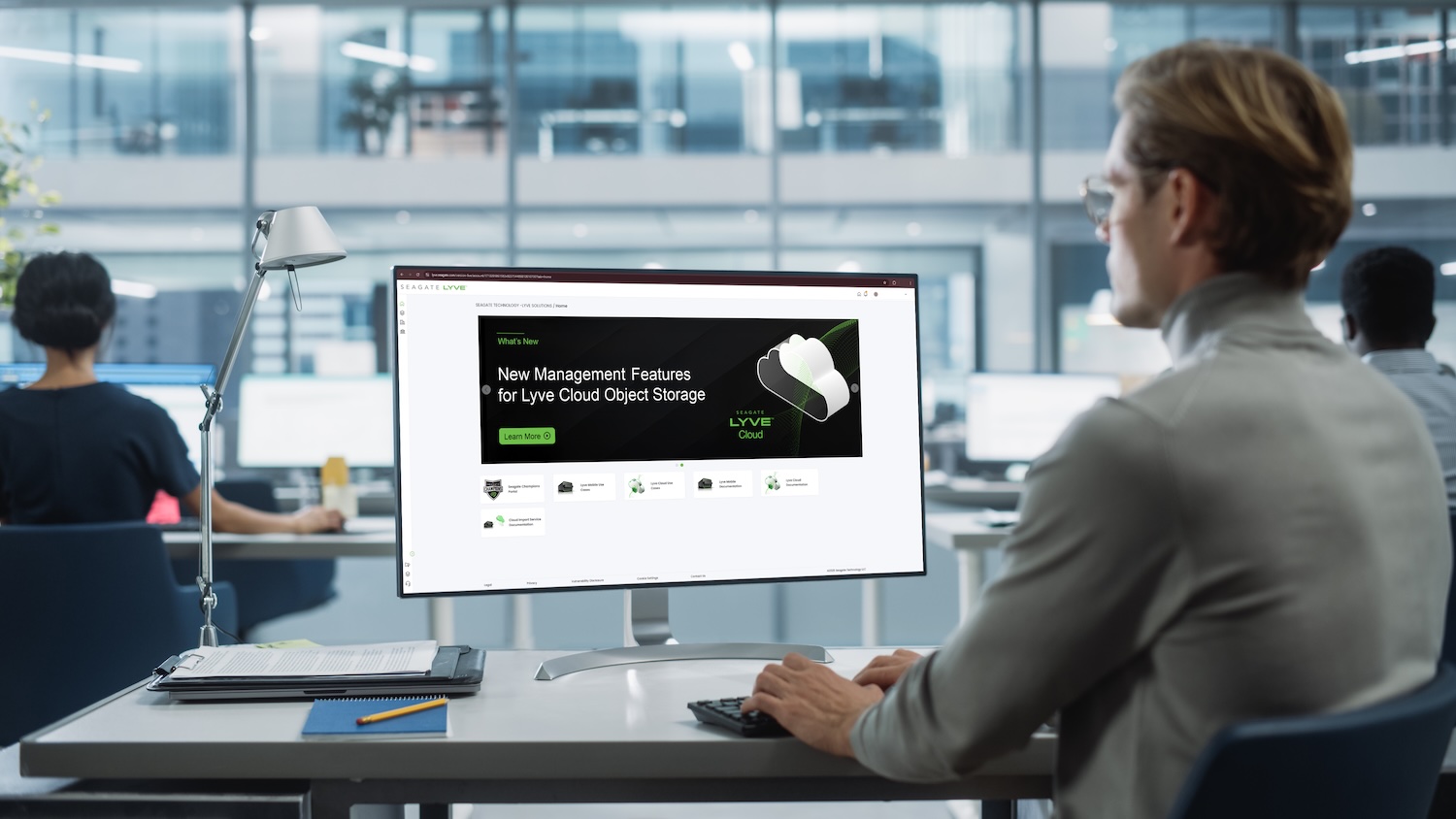
The Infrequent Access tier is particularly compelling due to its cost efficiency and service-level guarantees. Designed to offer a flexible, predictable solution for long-term data retention, Infrequent Access reduces storage costs to $3.75 per TB per month. The solution is designed for organizations at scale; there is a 180-day minimum object retention period, and Infrequent Access requires a minimum commitment of 1PB per month. Even though it’s a lower-cost option, Infrequent Access maintains all the advanced security and high-availability features in the Standard Access tier, including comprehensive encryption, immutability options, and global availability.
Lyve Cloud has grown out of Seagate’s long-standing commitment to supporting customers wherever their data resides. The Lyve portfolio is an enterprise edge-to-cloud platform built for the complexities of data gravity and mass capacity data. Along with Lyve Cloud, Seagate offers the Lyve Mobile Data Transfer Service, enabling enterprises to collect, store, move, and upload data from endpoint to edge and into the S3 cloud of their choice. The Lyve Cloud offering was built on customer requirements and decades of learning from Seagate’s development of enterprise storage systems. It brings the same commitment to reliable, secure, and performant storage in an S3 object storage solution.
Lyve Cloud differentiates itself from other popular cloud offerings primarily through transparent, predictable pricing with no hidden fees for data egress or API calls. Additionally, Lyve Cloud emphasizes simplicity and ease of integration, particularly with hybrid and multi-cloud environments, offering seamless compatibility with existing workflows. This report will examine the simplicity of integrating the Infrequent Access tier into our existing Veeam environment, providing a secondary backup repository in the cloud.
Understanding Lyve Cloud
How Lyve Cloud Works
Lyve Cloud is a flexible and scalable cloud storage solution powered by Seagate’s extensive experience in mass data storage. It offers businesses and enterprises an S3-compatible object storage platform that integrates seamlessly with existing applications, providing reliability and flexibility for various use cases.
| Plan Tiers | STANDARD MONTHLY | STANDARD RESERVED | INFREQUENT ACCESS |
| Order Process | Self-Serve | Self-Serve or Assisted | Self-Serve or Assisted |
| Terms | Month-to-Month | 12/24/36 Months w/ Auto-Renewal | 12/24/36 Months w/ Auto-Renewal |
| Billing Types | Monthly Metered Billing | Terms Commitment (Adv Pay) | Terms Commitment (Adv Pay) |
| Benefits |
|
|
|
Each tier is designed to optimize the cloud storage experience based on performance, cost, and data access needs. Additionally, the Standard Monthly, Standard Reserved, and Infrequent Access tiers have a flat rate, providing businesses with straightforward pricing without surprises.
Latency & Retrieval Expectations
Seagate Lyve Cloud features globally distributed storage sites designed to minimize latency and enhance retrieval speeds by bringing data closer to end-users. With locations in North America, Europe, and the Asia-Pacific region, users benefit from faster access. Actual performance can be affected by factors such as WAN provider quality and regional network speeds. Lyve Cloud offers standard access and dedicated infrequent access storage, ensuring consistent retrieval times that cater to various workload requirements. Additionally, regional redundancy improves availability, reduces the risk of downtime, and guarantees reliable access to critical data.

Simple and Predictable Pricing
Avoiding the hidden costs commonly found in traditional cloud storage, Seagate Lyve Cloud delivers a straightforward pricing model. Unlike providers that impose egress fees, API call charges, or deletion penalties, businesses can store, access, and move data freely. This transparent approach is particularly beneficial for high-volume workloads, offering cost efficiency and scalability without unexpected expenses.
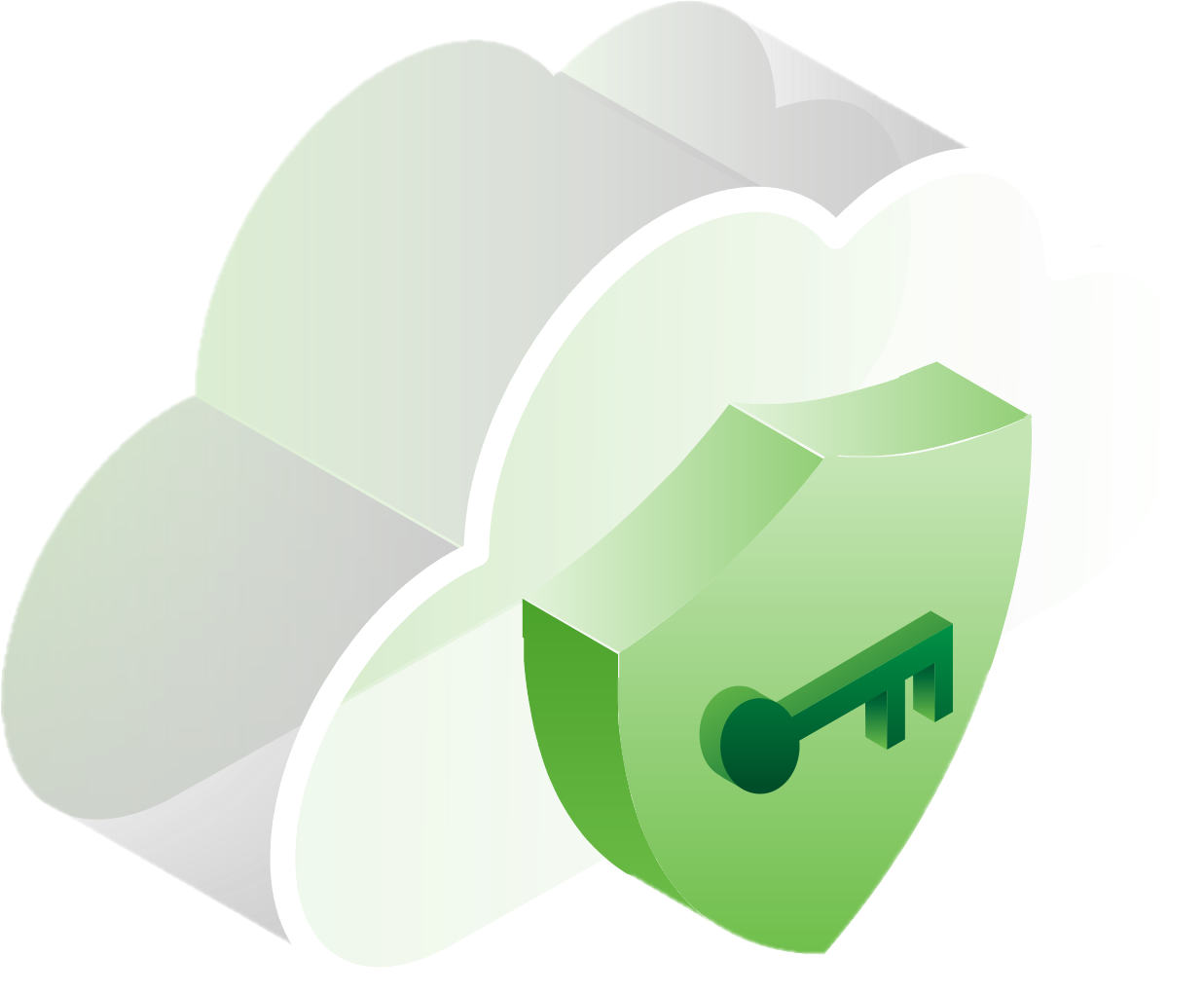
Enterprise-Grade Security & Compliance
Built with enterprise security at its core, Lyve Cloud ensures data integrity and regulatory compliance across various industries. With certifications including SOC 2, ISO 27001, and HIPAA, it meets rigorous security and privacy standards, making it a trusted solution for organizations managing sensitive information.
Lyve Cloud employs transport layer security (TLS 1.2+ with AES-256-GCM) to protect data in transit. At the same time, encryption at rest is available through multiple options, including customer-managed keys (SSE-C) and an internal key management system (SSE-S3 by default). Multifactor authentication (MFA) strengthens account security, while near-instant geo-replication and object versioning provide safeguards against data loss. Lyve Cloud’s identity and access management framework ensures that only authorized users can interact with stored data, reinforcing a strong security posture.
Extensive ISV Support
Lyve Cloud supports a solid Independent Software Vendor (ISV) ecosystem, enhancing its compatibility and versatility across various enterprise scenarios. Notable ISV partnerships include Veeam for backup and disaster recovery, Commvault and Veritas NetBackup for advanced data management, Cohesity and Rubrik for hybrid-cloud environments, IBM Spectrum Protect for automated data backup, and Acronis for cybersecurity. Our exploration is leveraging Veeam exclusively because we already use it in our lab; integrating Lyve Cloud with any of these partners should be equally straightforward.
According to Rick Vanover, VP Product Strategy at Veeam, “The Veeam Ready-Object qualification (as with Seagate Lyve Cloud) is a must-have when it comes to determining where to store Veeam backup data. Immutability, performance, and simply being off-site are what organizations need to have when it comes to keeping data resilient.”
Storage Review Lab Performance & Testing Analysis
Using Lyve Cloud with Veeam for Backups
Lyve Cloud can be integrated with Veeam Backup & Replication to provide a flexible and cost-effective solution for modern data backup and recovery. This integration supports hybrid and multicloud environments, ensuring seamless protection across various workloads. Businesses can modernize their data protection strategy by combining Lyve Cloud’s scalable storage with Veeam’s backup and recovery features.
This paired solution helps you align with modern backup standards like (3-2-1-1): three copies of your data stored on two different media types, with one copy off-site and one immutable backup. Seagate offers detailed documentation to guide users through integrating Lyve Cloud into Veeam, helping businesses meet their recovery time and recovery point objectives while safeguarding against risks like ransomware.
In the enterprise, ransomware protection and immutability are critical. Lyve Cloud offers object immutability to protect an organization’s backup data from unauthorized changes or deletions, ensuring it remains secure and recoverable even in a ransomware attack. This feature is especially valuable when paired with backup solutions like Veeam, as it adds an extra layer of protection to your critical data.
Lyve Cloud also offers encryption for data in-use and in-flight, ensuring that sensitive information remains secure during storage, transfer, and access. Lyve Cloud also provides encryption for data at rest (DARE), further enhancing security. Lyve Cloud supports near-instant geo-replication and inter-site replication for enhanced disaster recovery, ensuring your backup data is available and protected across multiple locations. With Veeam’s robust backup and recovery features, Lyve Cloud delivers comprehensive protection, giving businesses confidence in their data protection strategy.
Seagate Lyve Cloud: Quick and Simple Configuration
Configuring Seagate Lyve Cloud is a straightforward process. It can be done directly through the web via the Lyve Management Portal, providing two ways to get started:
- Self-Service – Create a Lyve account to subscribe to and manage your Seagate Lyve services independently within the portal.
- Talk to an Expert—Work with a Seagate expert to design a storage solution tailored to your organization’s needs.
Once setup is complete, you will have access to the management portal, where you can choose between the storage tiers you purchased, such as Standard or Infrequent Access. Seagate provided access to the Standard and Infrequent Access tier locations for this analysis. We will briefly explain how to configure buckets and set access policies.
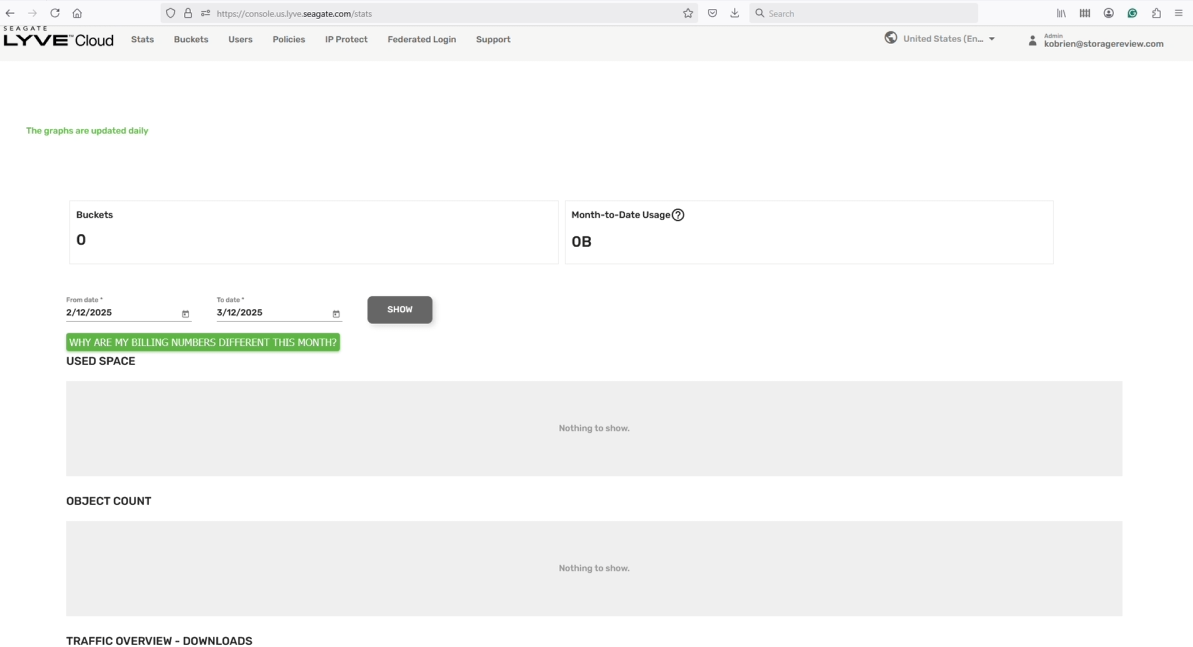
The Lyve Cloud dashboard provides high-level insights and offers a quick overview of key metrics. These include monthly usage, data usage within a specific date range, used space, object count, and traffic.
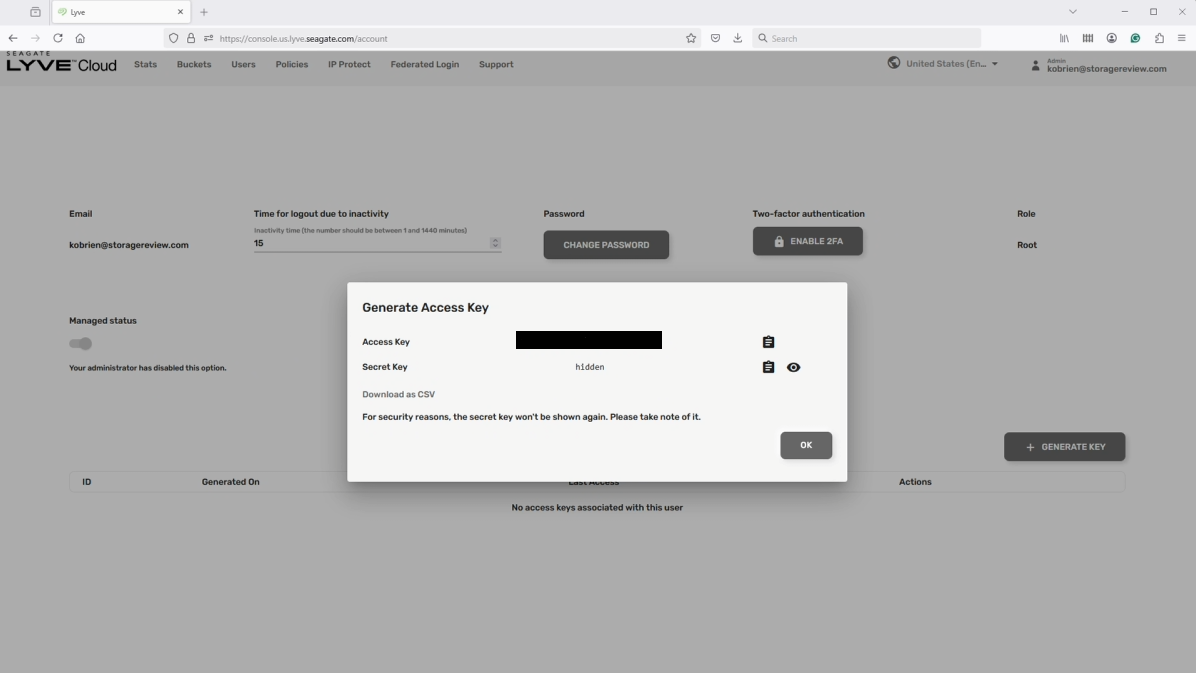
Now, we’ll generate our first access key. Click the top-right corner, navigate to Our Account, and select Generate Key. Be sure to copy the Access Key and Secret Key to a notepad for later use when connecting to a backup solution.
Navigate to Buckets -> Create Bucket using the prompts in the following image to create the first bucket.
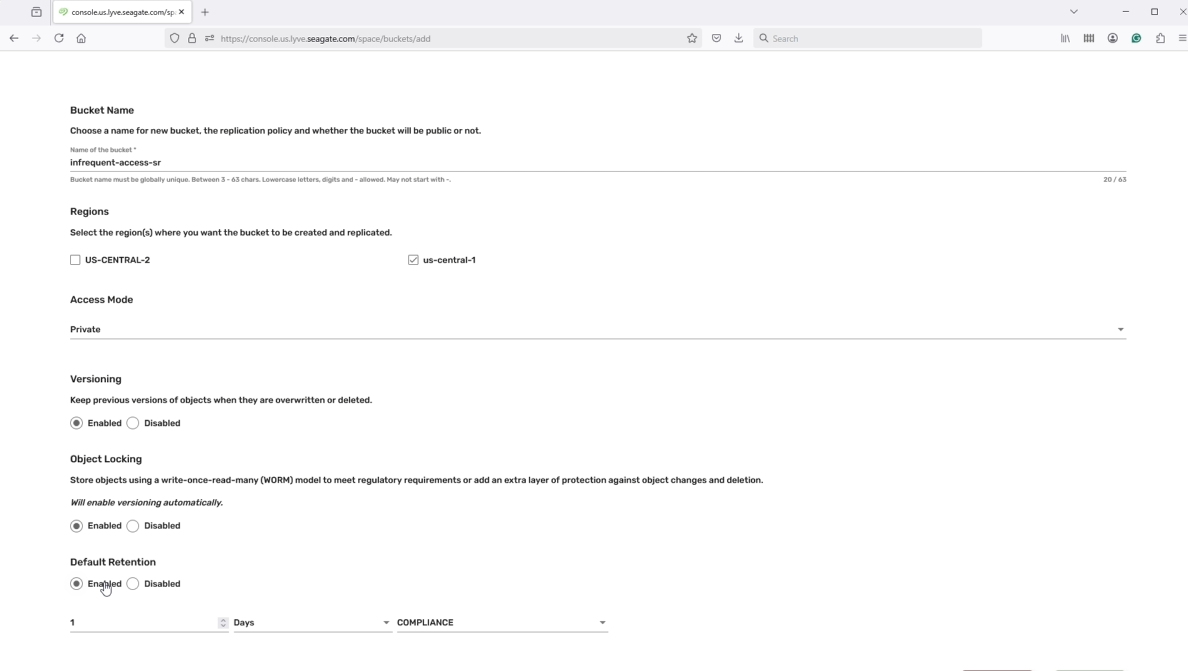
The first bucket we create is an Infrequent Access bucket. We set the name to infrequent-access-sr, select the region as us-central-1, choose private as the access mode, and hit create.
During bucket setup, notable features include enabling versioning, object locking, and setting default retention times to comply with standards.In this example, we showcase these options, but they are not enabled.
We followed the same steps to create our frequently accessed bucket: us-central-2. Seagate makes it easy to view buckets and their associated regions, check the creation date, and access simple tools for visualizing stats, configurations, and deletions.
Seagate simplifies access policy creation through the Policy tab. Here, we can create a new policy, name it all-access, and add an optional description for clear identification. If you have a pre-made configuration file for permissions, you can upload it here or manually select the buckets (in this case, all buckets) and set permissions for read, write, list, and delete.
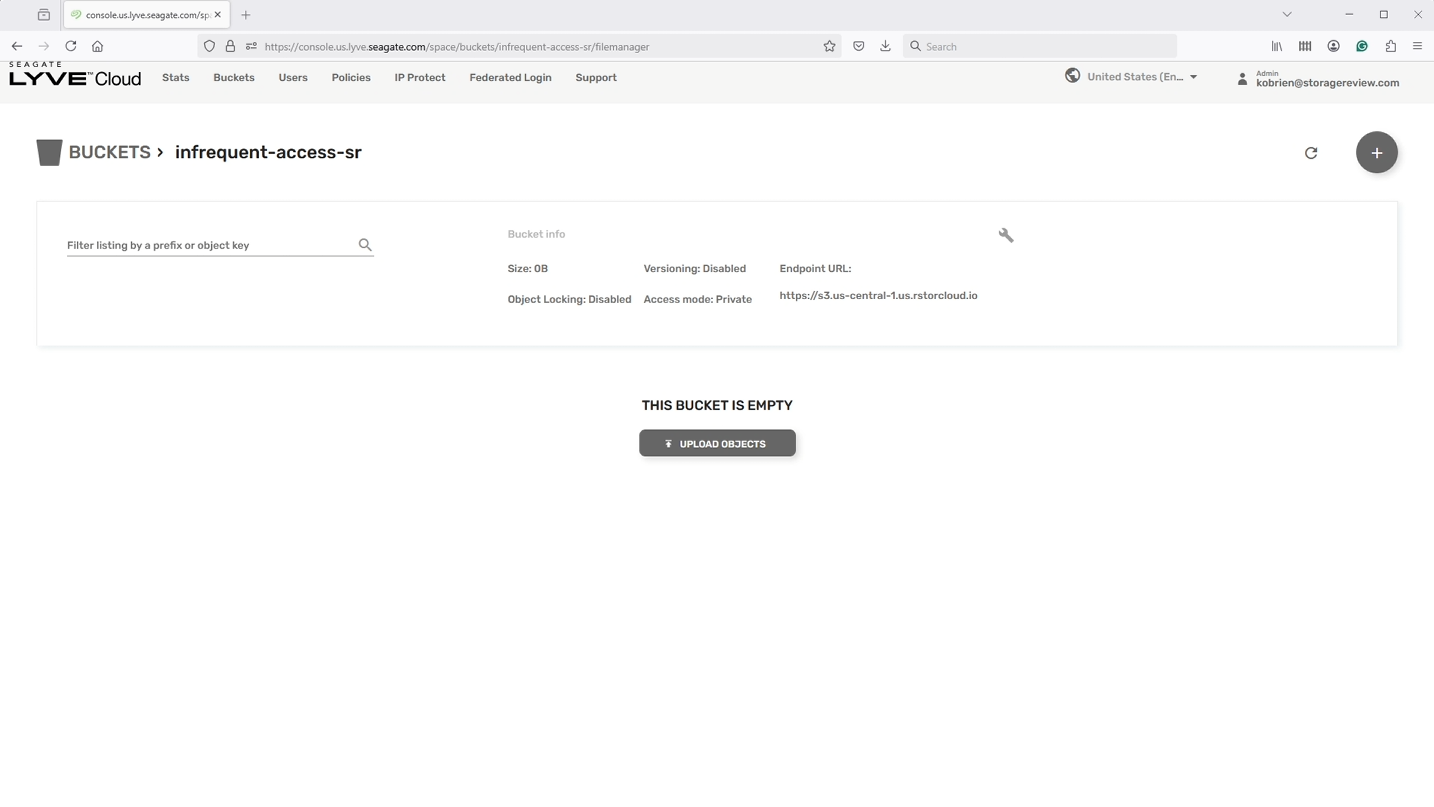
Returning to one of our buckets, we can see in just a few steps that we’re ready to link it using the provided Endpoint URL. Seagate has built a simple, yet feature-rich, platform. Some additional features, not covered here but important to many users, include setting up MFA/2FA for user accounts, creating federated logins for enterprises, managing users, and using IP Protect to control which IP addresses or ranges can access specific resources.
Leveraging Seagate Lyve Cloud + Veeam Scale-Out Repositories
In our lab, we followed Veeam’s documentation on configuring Veeam Backup & Replication with Scale-Out Backup Repositories to establish a robust and scalable backup solution. By integrating Lyve Cloud, we combined local storage with cloud storage tiers to handle frequently accessed and infrequently accessed data. Veeam’s deduplication features enhance this setup, providing a flexible solution that optimizes storage performance and supports long-term data retention. This configuration allows us to effectively manage backup data across various storage tiers while ensuring seamless data accessibility.
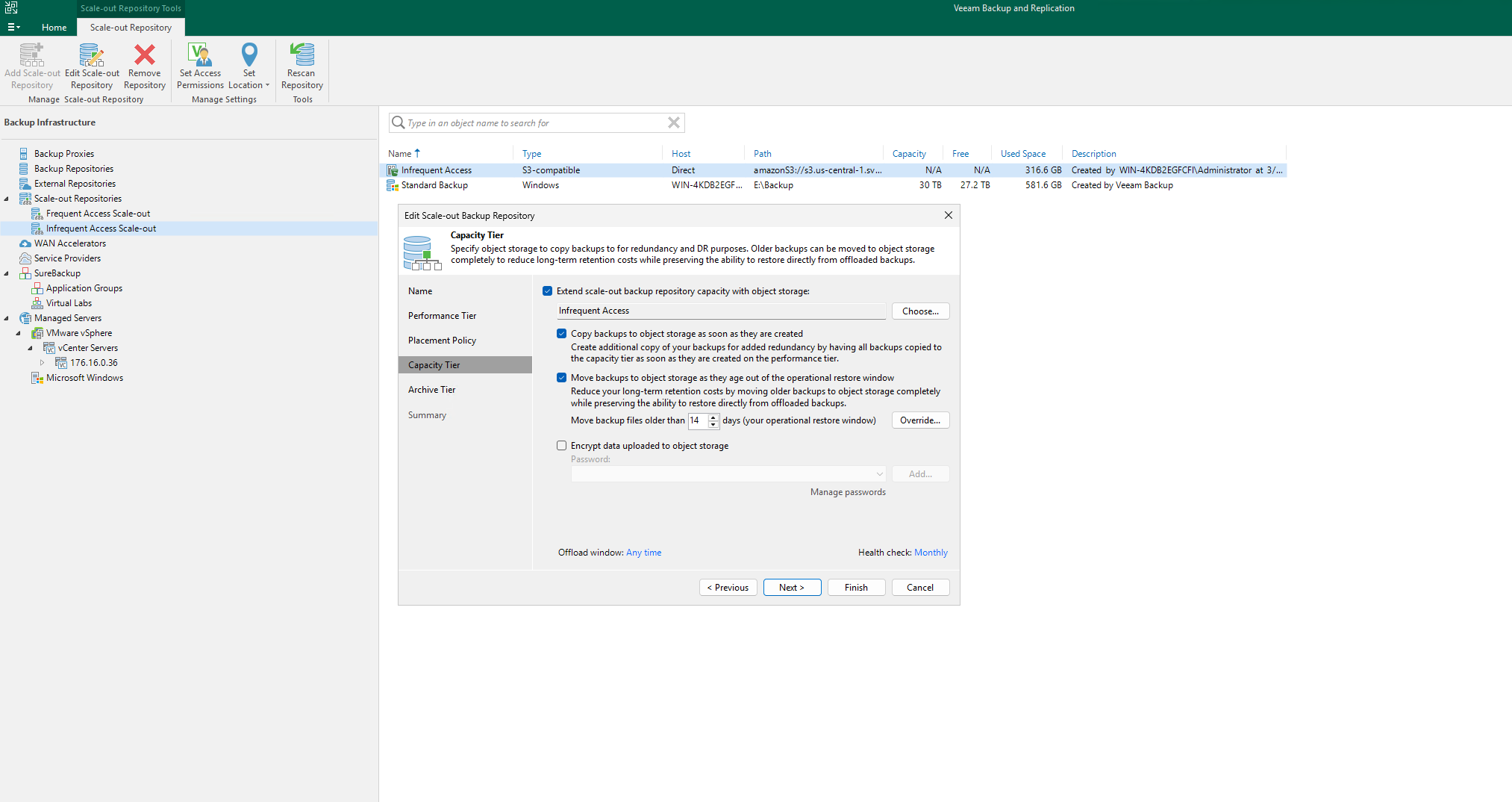
The image above showcases the Capacity Tier settings within the scale-out backup repository, where data from performance extents can be offloaded for long-term retention. In this case, the repository is configured to use our Lyve Infrequent Access tier, extending storage capacity with object storage. The settings enable two key functions:
- Copy backups to object storage as soon as they are created, ensuring redundancy by immediately duplicating backups to the capacity tier
- Move backups to object storage as they age out of the operational restore window, helping to optimize storage costs by offloading older backups while still allowing direct restores from object storage.
The threshold for moving backups is set to 14 days, meaning backups older than this are automatically transferred to the Lyve Infrequent Access tier for efficient long-term storage. While not configured above, it is also recommended to encrypt the backups in Lyve Cloud (and be sure to store the encryption password in a safe place).
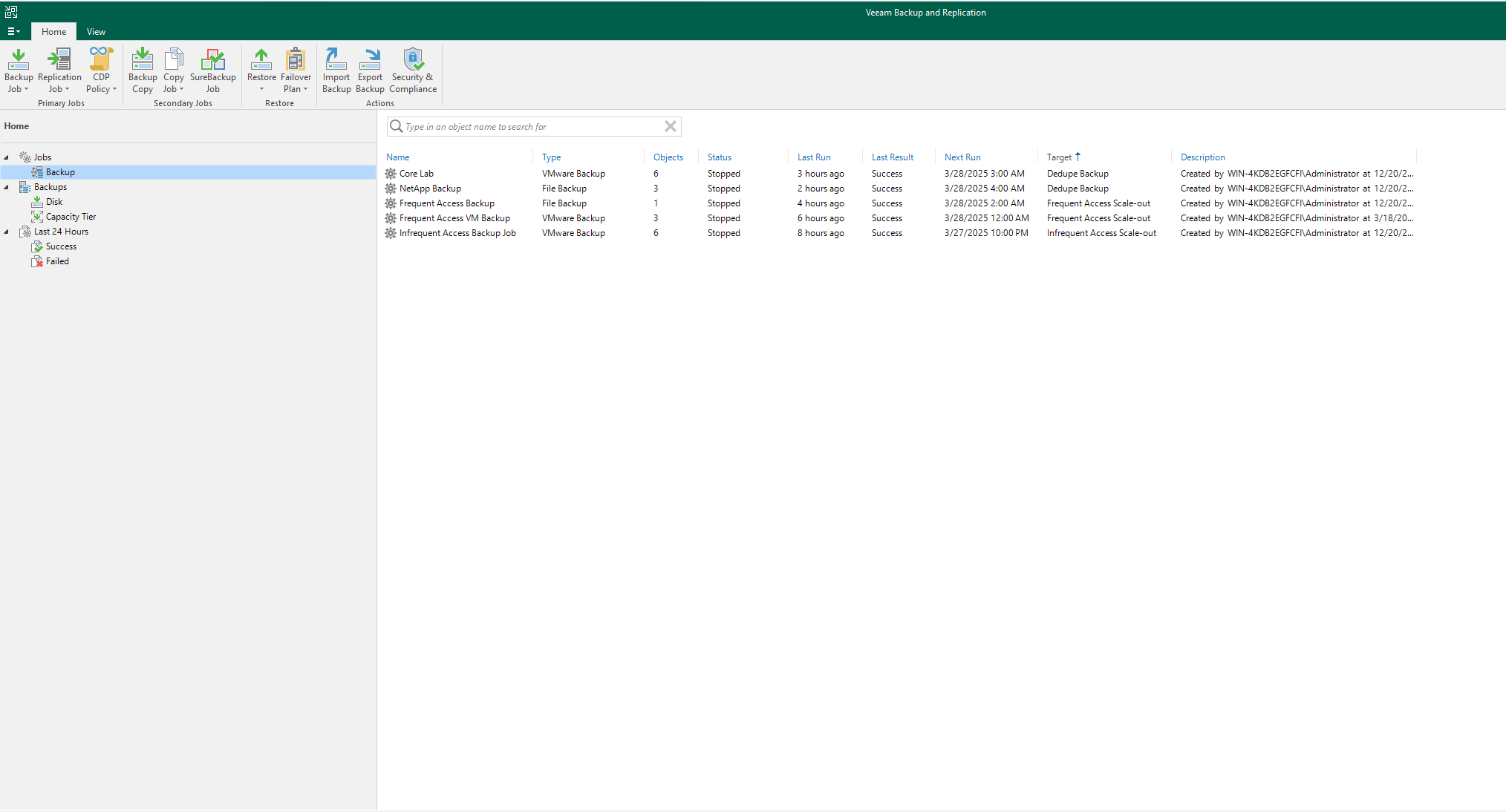
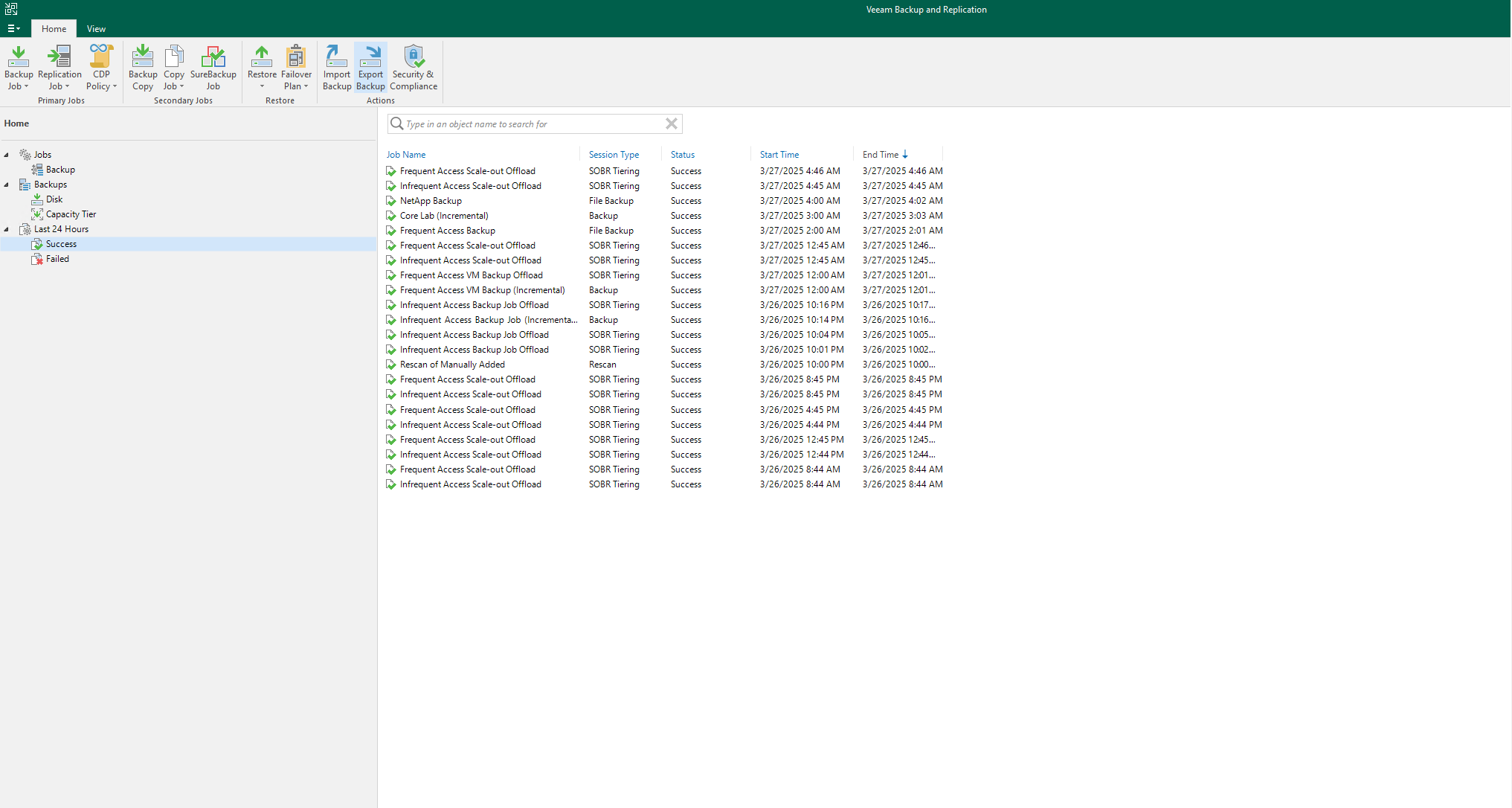
Selecting the Success option illustrates that our backup jobs are being completed, indicating that our Lyve Frequent and Infrequent Object Storage are functioning as expected across our Veeam scale-out repositories.
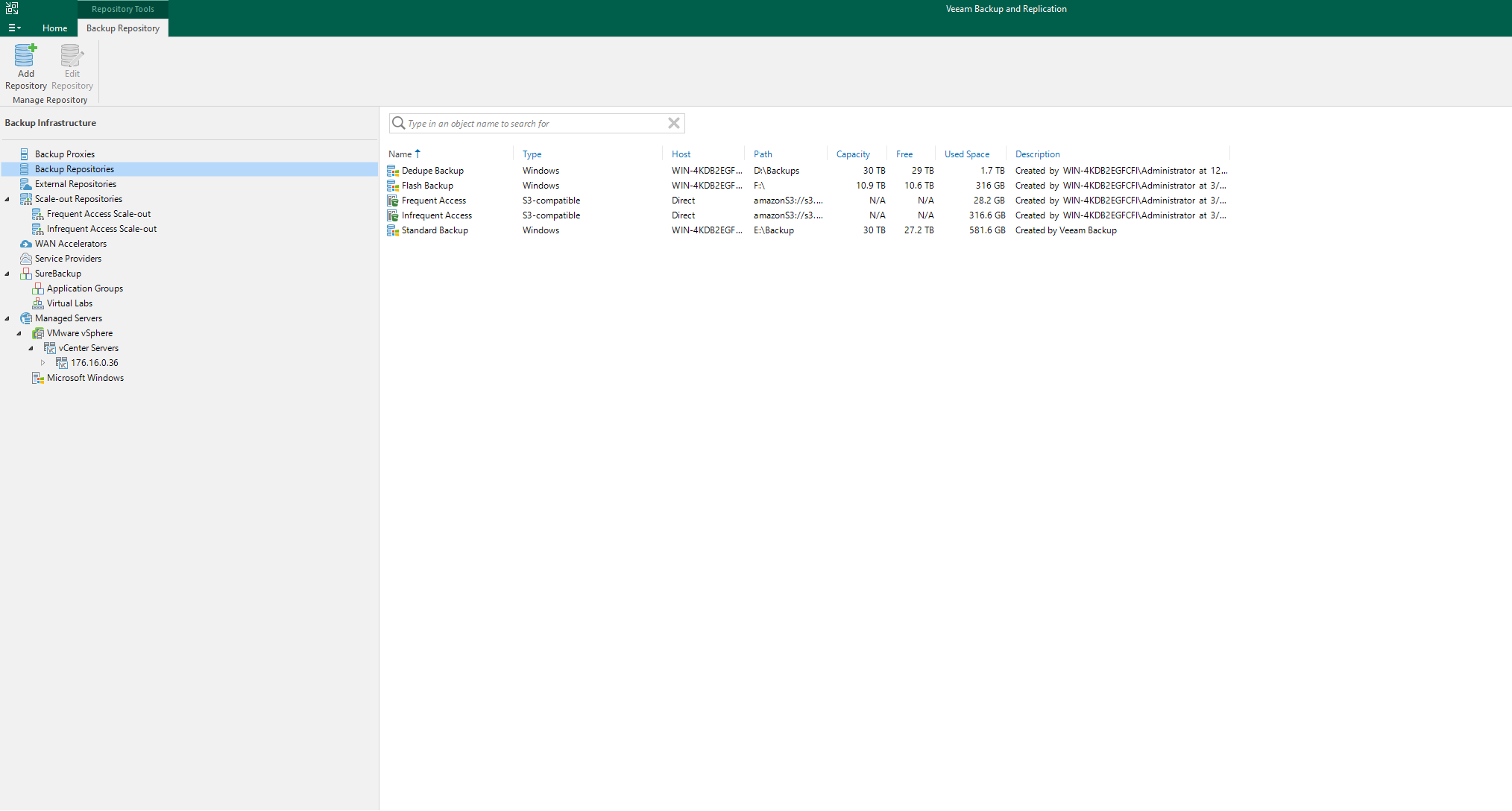
Our Veeam backup repositories show the Lyve Infrequent and Frequent Access buckets and the current used space, indicating that data is being sent to the intended location. These were added using the endpoint URLs and keys we created alongside our local backups.
Is Lyve Cloud as Easy as Seagate Says?
The overall setup process for getting storage provisioned out of Seagate’s Lyve Cloud takes only a few minutes, with Veeam’s setup taking around the same time. This is about as painless as it gets when deploying storage. Many on-prem solutions take more time to boot up after getting plugged in than this does serving out object-storage buckets. From an IT admin perspective, when you use it like we did, you can mix the benefits of local storage for current backups with the capacity of cloud storage inside the same backup job.
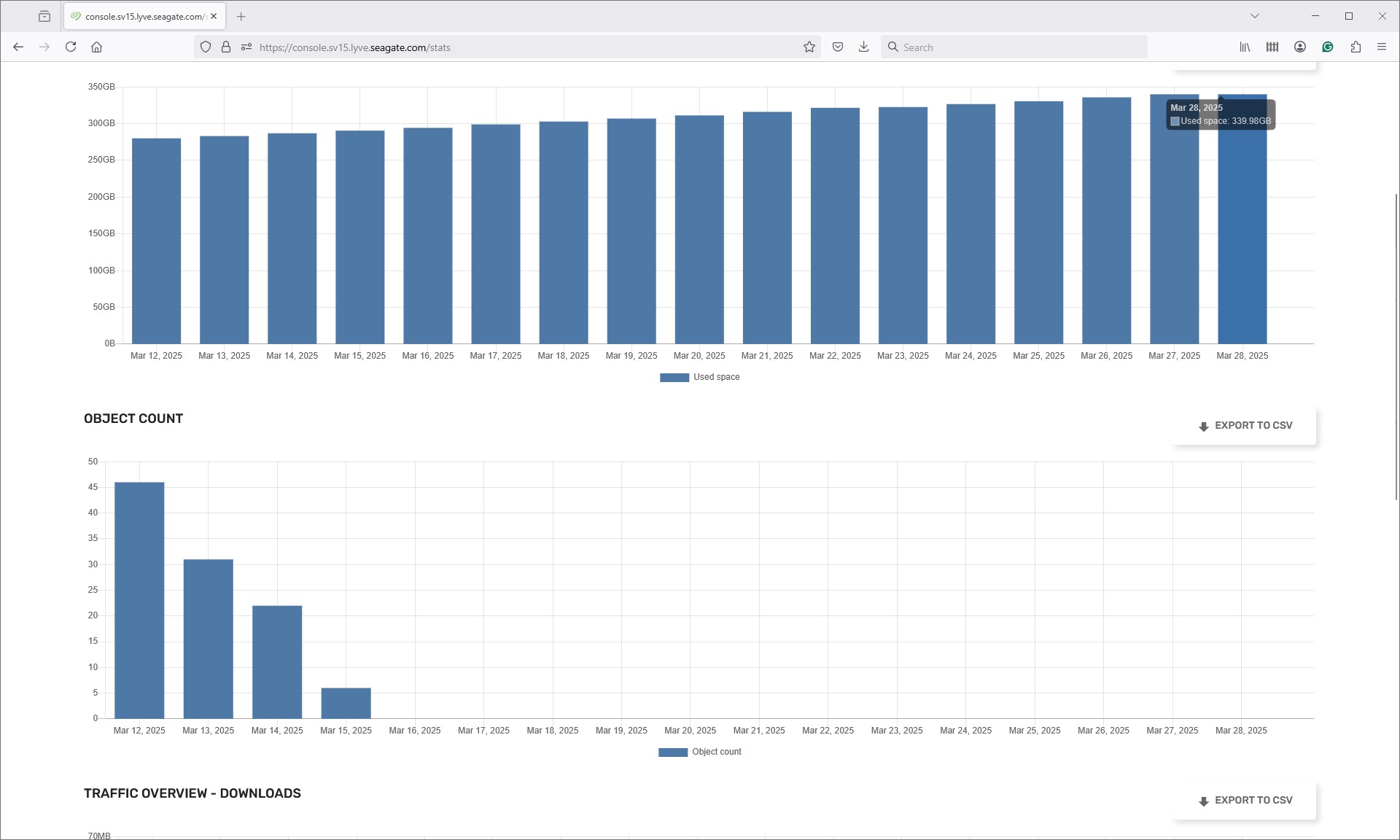
The Seagate Lyve Cloud management interface is easy to use and provides information on your data footprint at a glance. The main landing page shows you your capacity used, storage in and out, and object count right away. You can then drill into specific buckets for a more granular view.
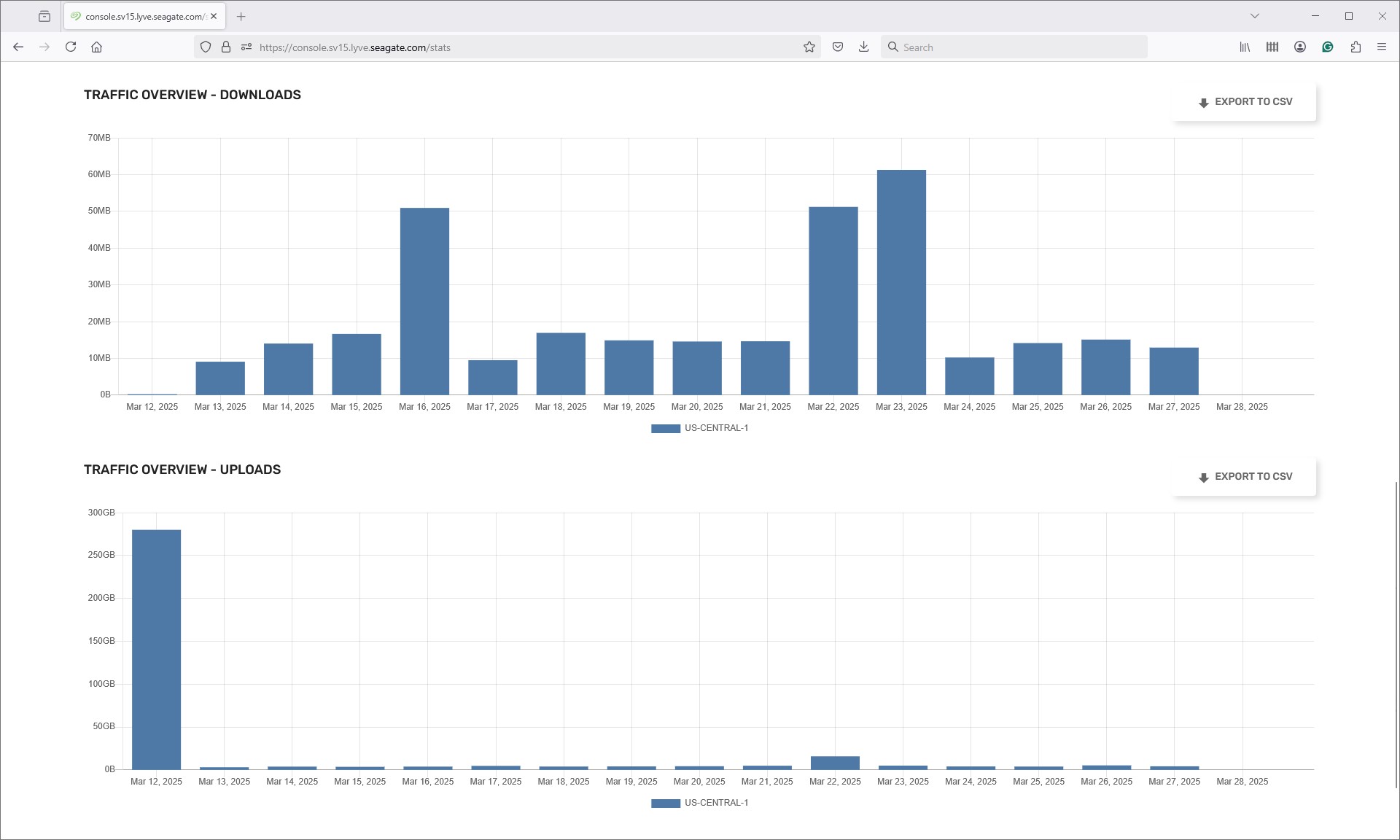
For businesses, the Seagate Lyve Cloud has many benefits, and perhaps the most important one is that it is a cloud platform that requires no additional on-site maintenance or support. When you leverage it in addition to an existing backup solution, you get seamless integration with off-site storage, including immutable storage features. The only areas that need attention are your backup needs and the size of the WAN link out of your data center.
So, is Lyve Cloud as easy as Seagate says? Absolutely yes!
Beyond Backup: Other Lyve Cloud Use Cases
Active Archives & Regulatory Compliance – Long-Term Data Retention Strategies
Managing vast amounts of data for compliance and auditing requires efficient, long-term storage. Lyve Data Transfer Services securely moves data from multiple sources into Lyve Cloud Object Storage, an S3-compatible target that simplifies ingestion and preparation. Lyve Cloud’s infrequent access tier and customizable lifecycle policies provide cost-effective archiving while ensuring data remains secure and accessible. As we have mentioned before, businesses can manage data seamlessly while maintaining compliance with no minimum retention periods, egress fees, or API charges.
AI/ML Data Storage – Efficient Management of Large-Scale AI Datasets
Handling large AI datasets requires flexible and cost-effective storage. Lyve Data Transfer Services streamlines data ingestion into Lyve Cloud Object Storage, making preparing datasets for AI model training and analytics easier. With no minimum retention periods, egress fees, or API charges, businesses can iterate on models without traditional storage constraints. Lyve Cloud’s infrequent access tier and lifecycle policies support long-term archiving while ensuring compliance. High-performance storage provides scalable, reliable access to AI-driven workloads at a predictable cost.
Video Surveillance & Media Storage – Scalable, Cost-Effective Storage for Large Files
Storing and managing large-scale video and media files requires secure, long-term storage. Lyve Cloud Object Storage ensures data integrity with features like WORM, object locking, versioning, and IP source control, enhancing security and productivity. Automated lifecycle policies simplify compliance without hidden fees or minimum retention periods. For research, media, and business intelligence, seamless access to historical content enables analysis, editing, and distribution. With scalable storage, Lyve Cloud supports growing data needs while maintaining cost efficiency.
Optimizing Workloads Across Standard & Dedicated Infrequent Access Tiers
Enterprises can optimize storage using Lyve Cloud Standard for frequently accessed data and Dedicated Infrequent Access for long-term retention. The Standard tier is ideal for active AI/ML training, video surveillance, and operational backups, offering low-latency performance. Dedicated Infrequent Access is best for compliance records, historical AI models, and disaster recovery backups, providing lower costs for rarely accessed data.
Automated lifecycle policies allow businesses to seamlessly transition data between tiers based on usage patterns. Frequently accessed data stays in Standard, while older, less-used data moves to Dedicated Infrequent Access, ensuring cost savings without compromising security or accessibility. This strategic approach balances performance, compliance, and budget efficiency.
Conclusion
Seagate’s introduction of Lyve Cloud was driven by the explicit goal of empowering enterprises to effectively manage and extract value from rapidly expanding volumes of data. By offering predictable cost, simplified integration, and global scalability, Lyve Cloud addresses common enterprise storage pain points. Strategic partnerships with prominent ISVs like Veeam, Commvault, Veritas, Cohesity, IBM, and Rubrik reinforce Lyve Cloud’s position as a versatile and easy-to-integrate cloud solution. The latest Lyve Cloud update, Infrequent Access, further enhances Lyve Cloud’s value by providing a cost-effective storage option specifically optimized for long-term data retention, compliance requirements, and archival workloads while maintaining robust security and global availability.
In our lab evaluation, we integrated Seagate Lyve Cloud with our existing Veeam Backup & Replication setup. Configuring Lyve Cloud storage buckets, access policies, and scale-out repositories was intuitive and took only minutes, quickly validating Seagate’s simplicity and ease of use claims. Our testing highlighted Lyve Cloud’s excellent compatibility with Veeam’s backup and recovery features, notably its robust object immutability, efficient handling of backups, and reliable performance with off-site data replication.
We recommend trying Seagate Lyve Cloud’s free 30-day trial to experience firsthand how it can simplify and enhance your organization’s data management strategy.
Seagate Lyve Standard Access tier is priced at $7.50 per terabyte per month.
Seagate Lyve Cloud Product Page
This report is sponsored by Seagate. All views and opinions expressed in this report are based on our unbiased view of the product(s) under consideration.


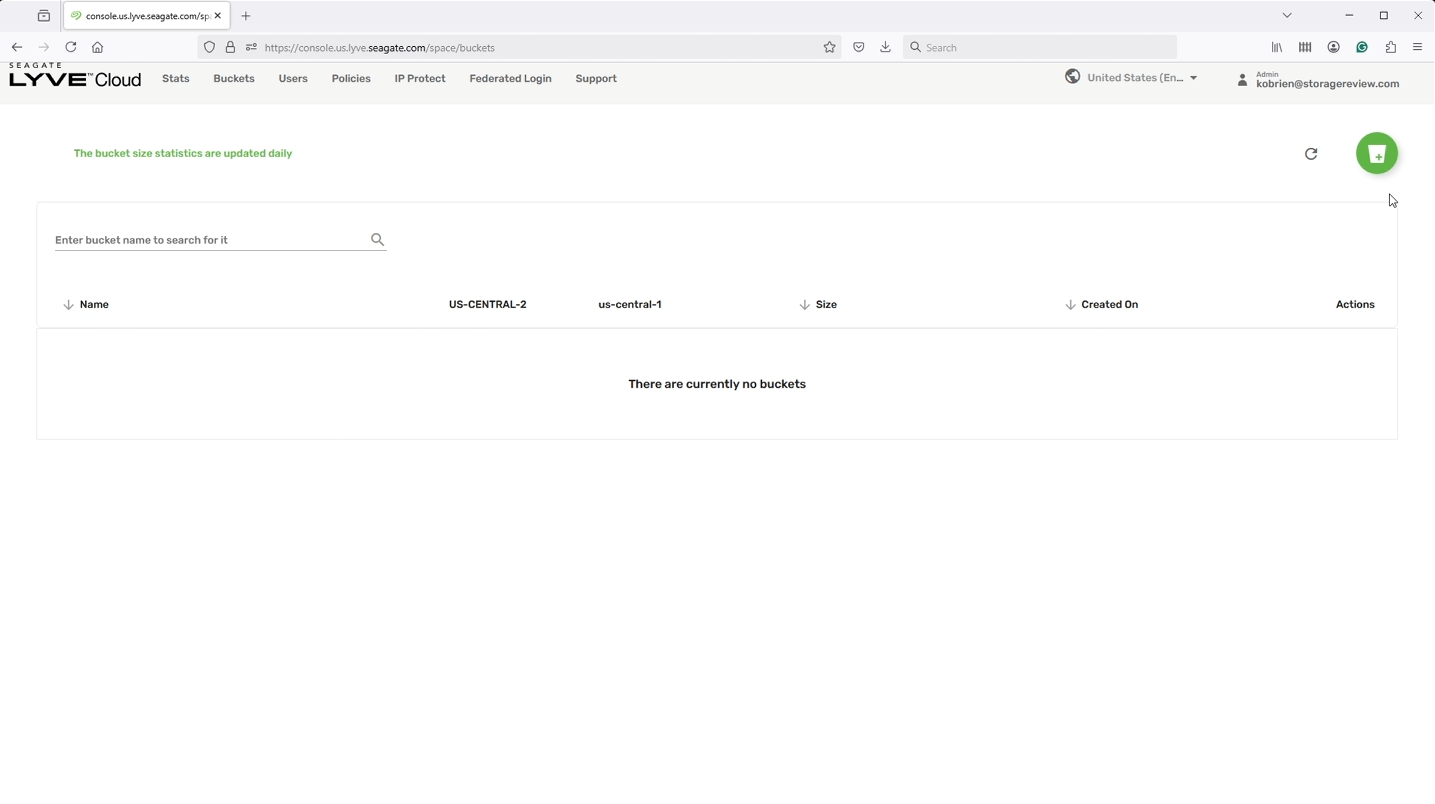
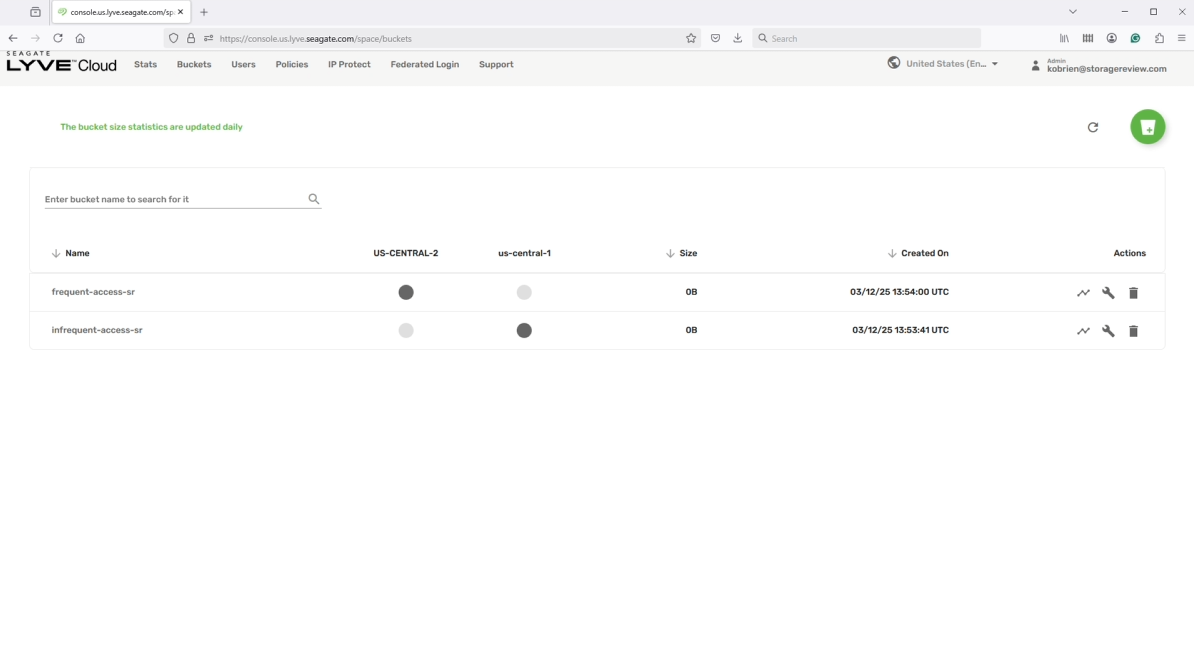
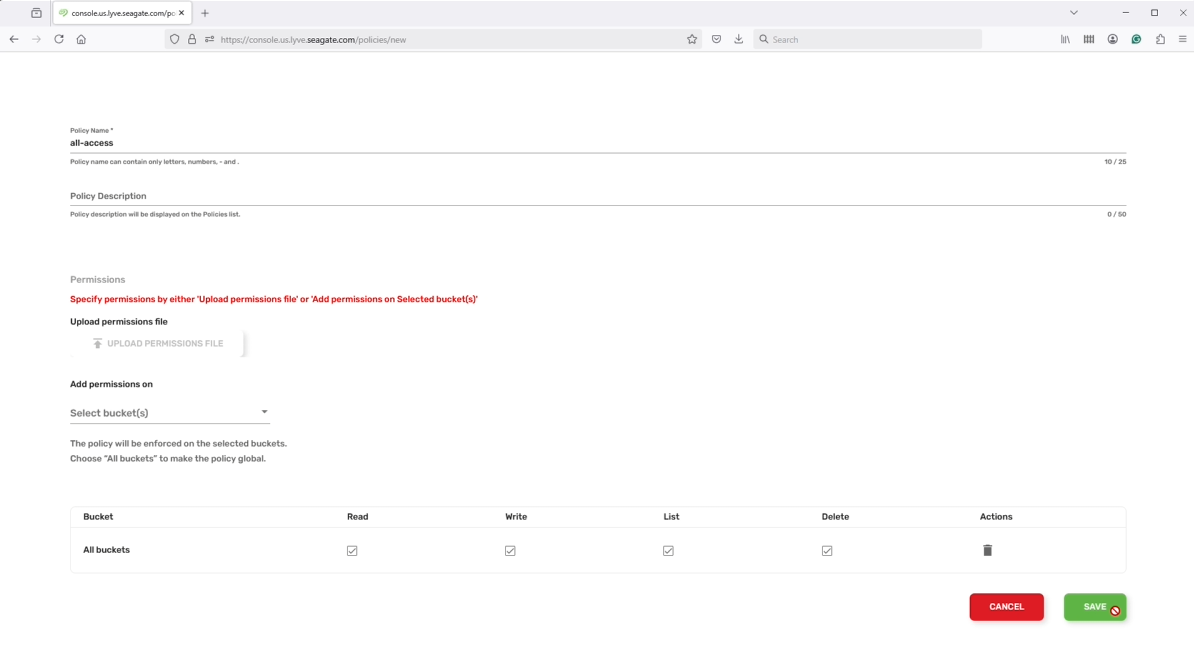


 Amazon
Amazon